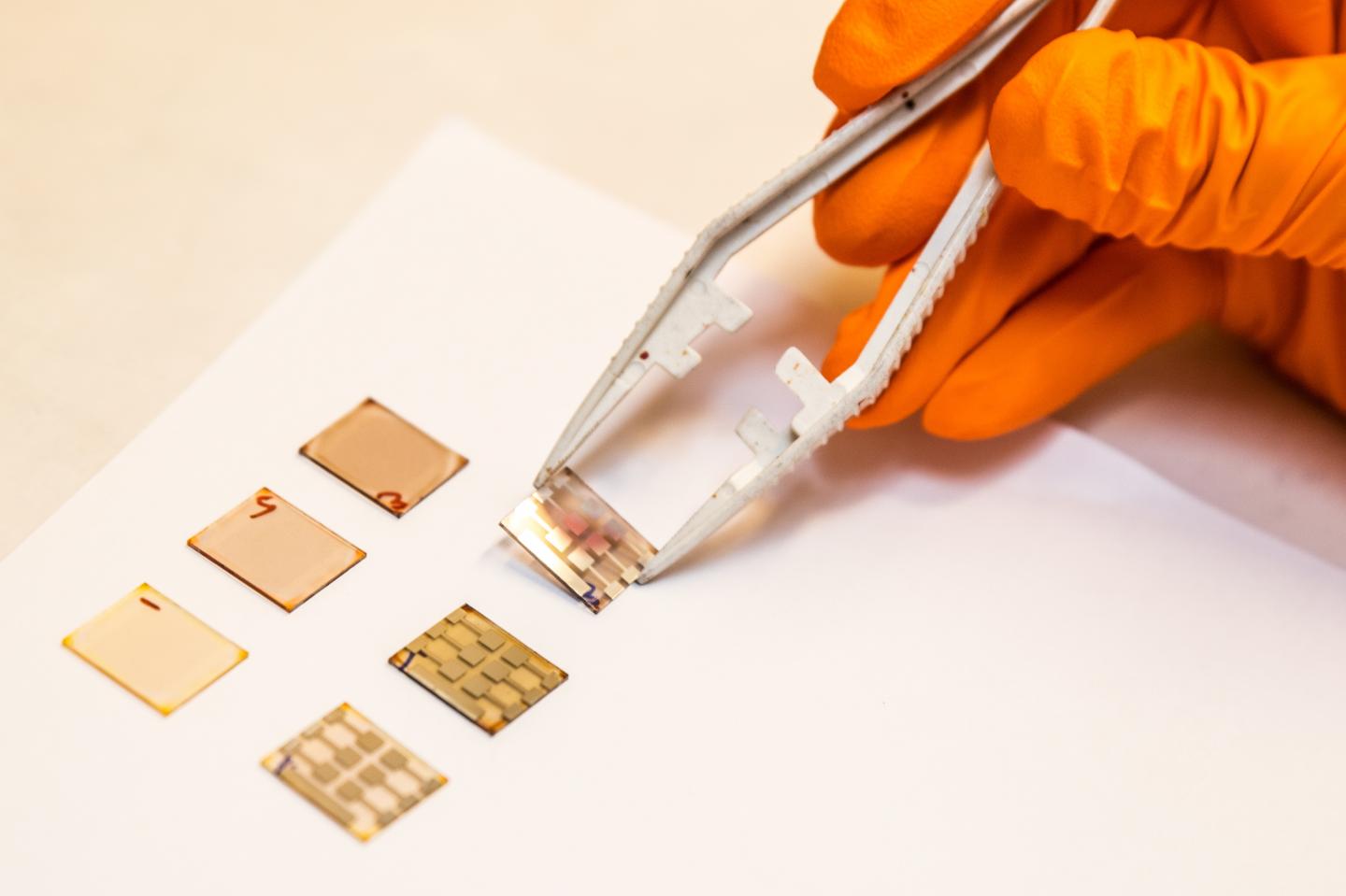Scientists at Linkoping University working with colleagues from China have shown how to achieve efficient perovskite LEDs. In an article published in Nature Communications, they provide guidelines on fabricating high-quality perovskite light emitters for high-efficiency perovskite LEDs.
Since solution-processed perovskites contain large amounts of defects, which are mostly halide vacancies, efficient control of the perovskite crystallinity is required for high-performance optoelectronic devices. The research group at LiU, under the leadership of Senior Lecturer Feng Gao, in collaboration with scientists from Nanjing Tech University, and Soochow University in China, has now studied how the precursor components and the interfaces affect the crystallization process of perovskites.

(Image: Charlotte Perhammar/LiU)
"We and several other groups found that simply introducing an extra amount of organic halides in the precursor can help to passivate the defects and achieve highly emissive perovskite films" says Zhongcheng Yuan, PhD student in Department of Physics, Chemistry and Biology (IFM) at LiU, who is the first author of the article. The excess organic halides, however, hamper the perovskite crystallization, resulting in low-conductivity perovskite emissive layers and poor-performance LEDs.
The scientists have now resolved this dilemma by supporting the perovskite crystallization with a metal oxide, ZnO, which helps to remove a suitable number of the extra organic cations, making it possible for better crystallization. The article in Nature Communications shows how chemical reactions between different metal oxide layers and perovskite layers affect the properties of the thin films of perovskites, and consequently the performance of LEDs.
This new discovery, in combination with previous results from the same group on dealing with defects in perovskites, has allowed them to fabricate efficient perovskite light-emissive films in the laboratory. The resulting devices give near-infrared LEDs with a quantum efficiency of 19.6%, i.e. 19.6% of the electrons supplied to the device are emitted as light (photons), which is among the best performance for perovskite LEDs in the world.
